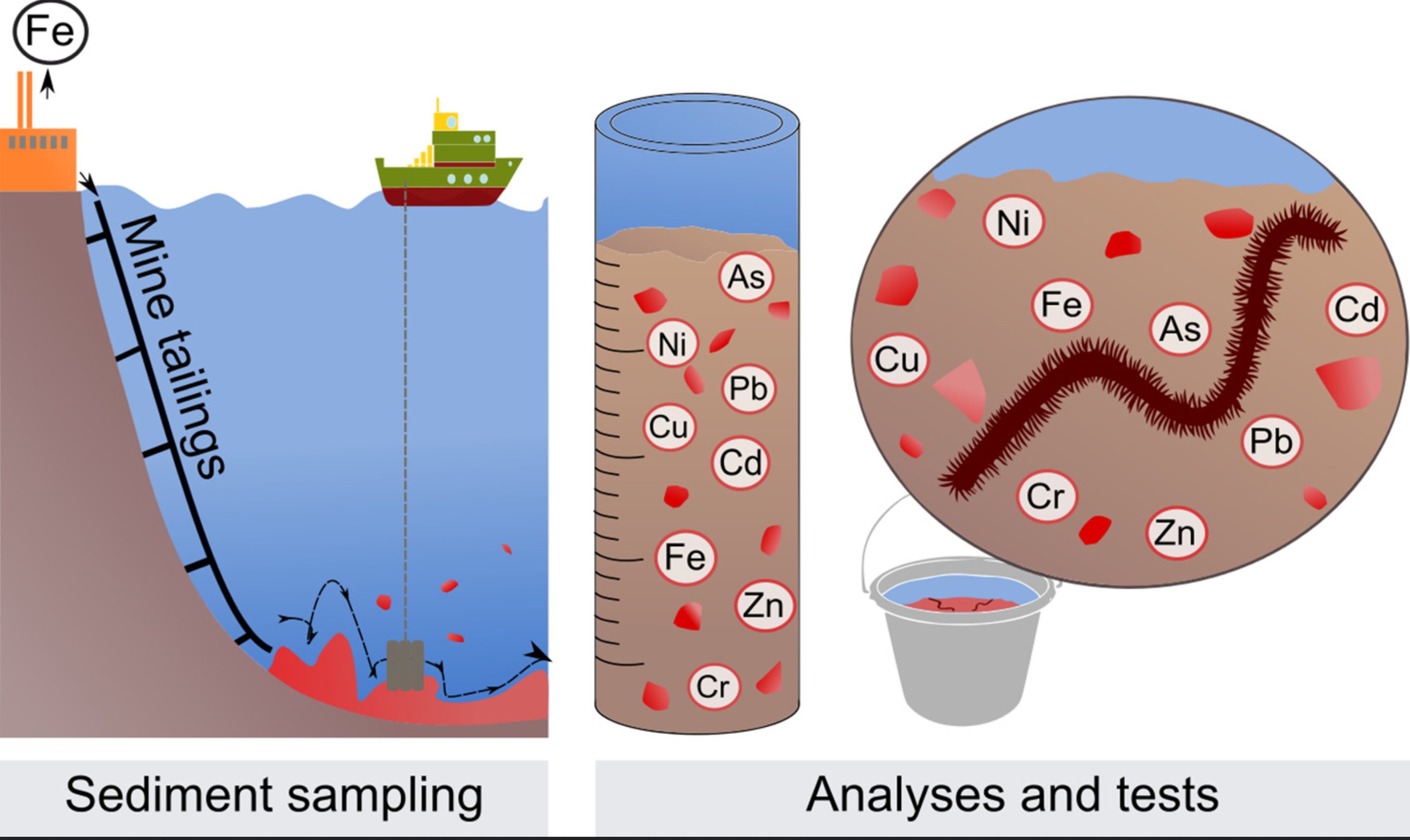Lability of toxic elements in Submarine Tailings Disposal: The relationship between metal fractionation and metal uptake by sandworms (Alitta virens)
New publication by Anne Mette T. Simonsen, Kristine B. Pedersen, Pernille E. Jensen, Bo Elberling, Lis Bach

Abstract:
Mine tailings from the iron ore mine Sydvaranger Gruve have been deposited in Bøkfjorden, Northern Norway, for >40 years. This study investigates the environmental impacts of submarine tailings disposal one year after the cessation of the mine by combining analyses of total metal concentrations (nitric acid digestion) and metal fractionation patterns (sequential extraction procedure) of sediments with the metal uptake (bioassays) by sandworms (Alitta virens) exposed to Bøkfjorden sediment. The analyses focused on metals (As, Cd, Cr, Cu, Fe, Ni, Pb, Zn) in sediment cores retrieved from a horizontal transect of the fjord. High concentrations of the target metal iron was found in the fjord (>13,000 mg/kg). According to Norwegian sediment quality guidelines (SQG), cadmium (2.55 mg/kg) and lead (174 mg/kg) were the only metals to exceed good sediment quality at the source area of mine tailings discharge. Despite general low total metal concentrations, labile (summarized exchangeable, acid soluble, reducible fractions) and potentially labile (summarized labile and oxidisable fractions) pools of mine tailings-related metals of cadmium (10–82%), copper (25–88%) and lead (10–67%) were detected while iron were characterized as inert (residual fraction: 89–97%). Despite spatial trends in total metal concentrations presumed to originate from mine tailings (Cd, Cu, Fe, Pb), there were no correlations between total and labile fractions. This can be explained by the high concentrations of iron, which under oxidised forms are suggested to inhibit a high lability of other metals. The metal uptake of sandworms was generally high compared to similar studies and exceeded moderate contamination classes for all metals compared to Norwegian standard values. Both labile metal fractions (cadmium, copper and iron) and total metal concentrations (copper, iron) showed positive correlations (r > 0.6) with metal uptake. Thus, both the total and labile metal fractions can pose an environmental risk.
